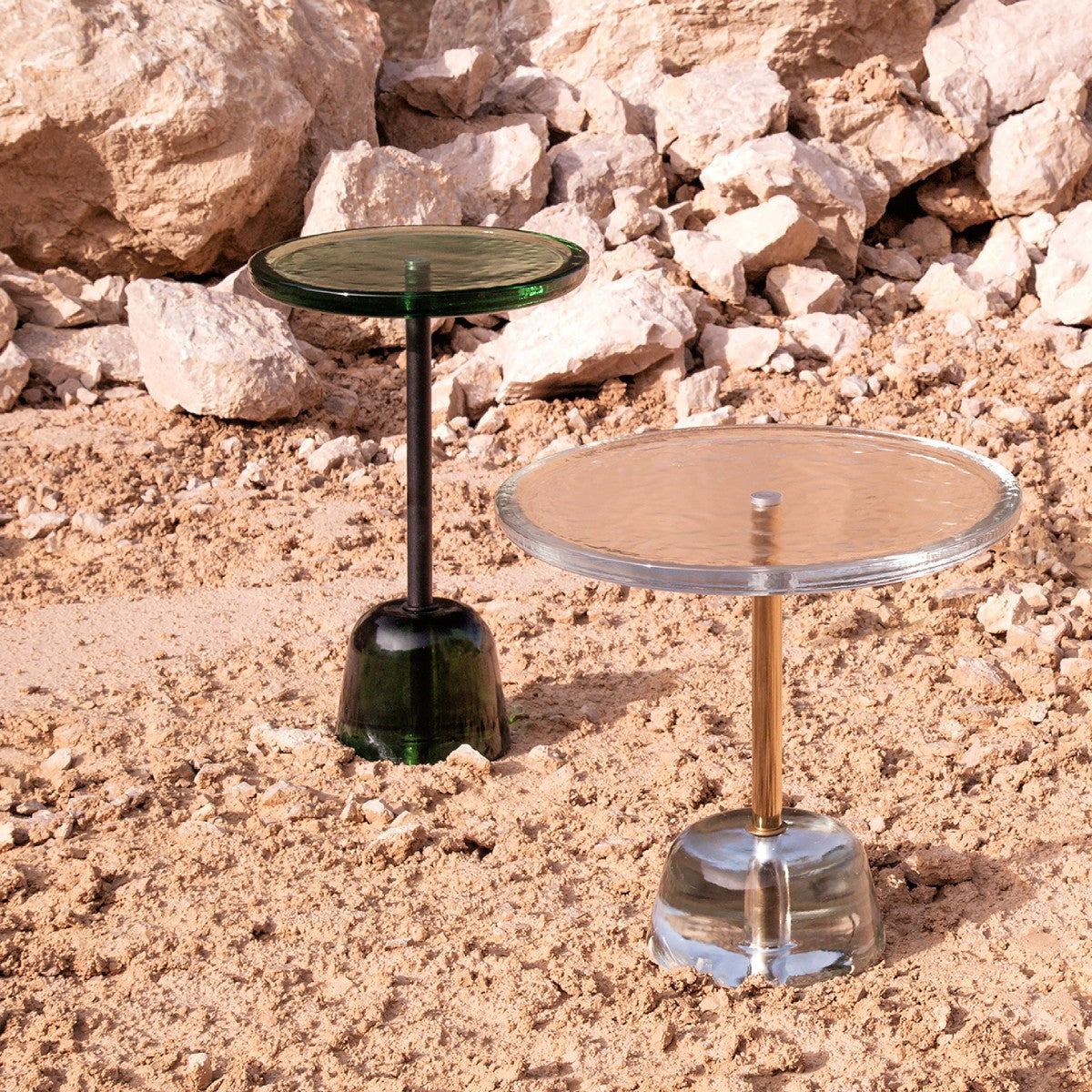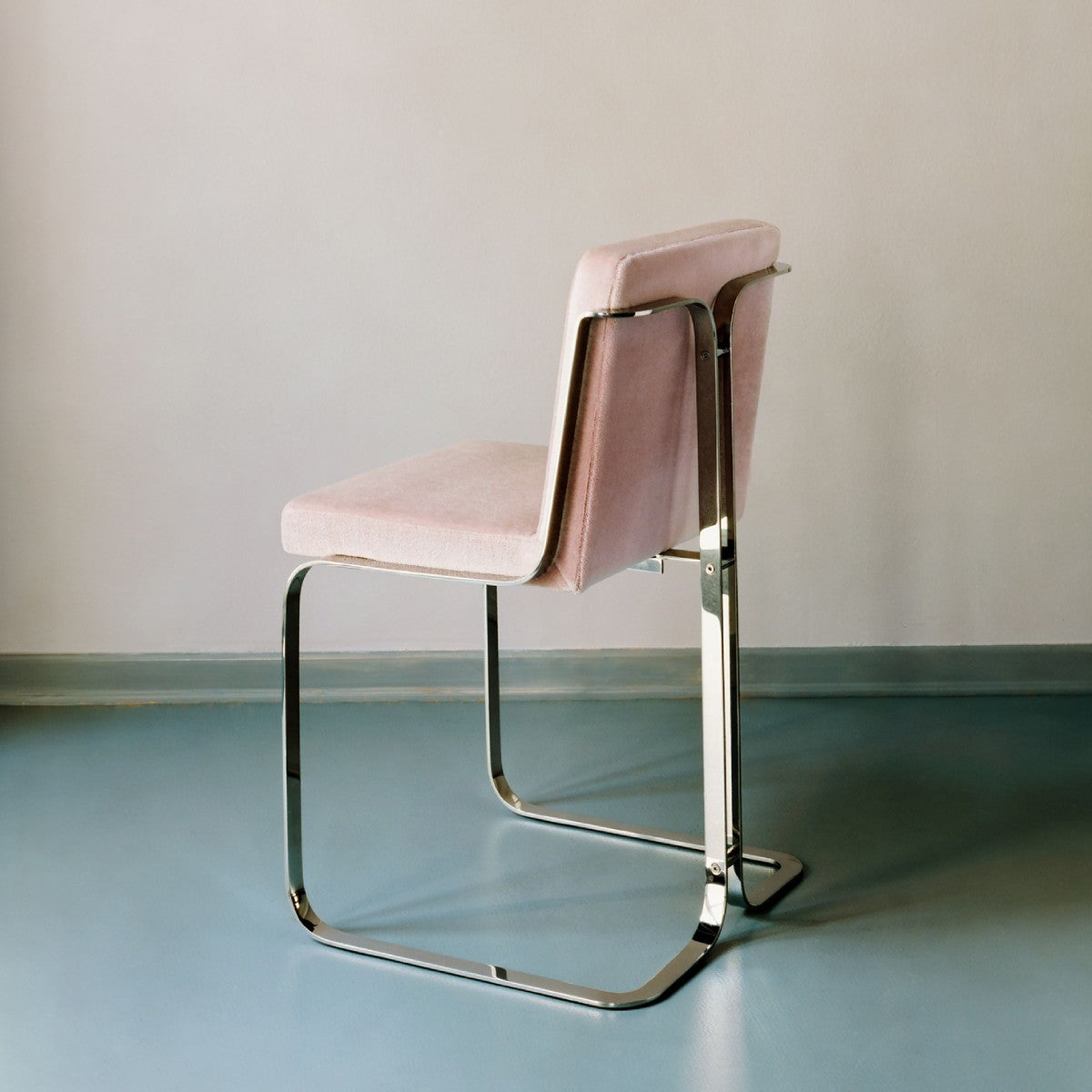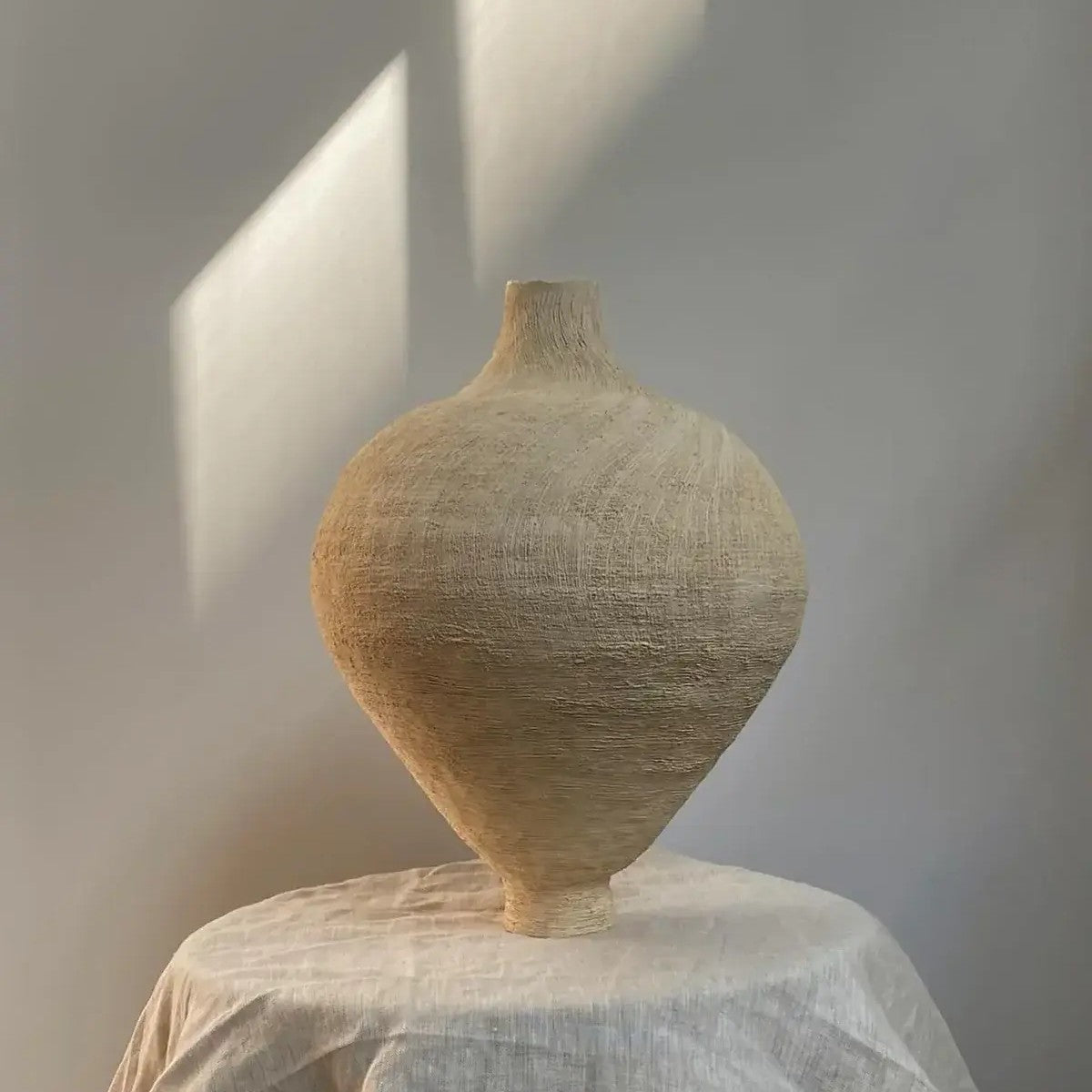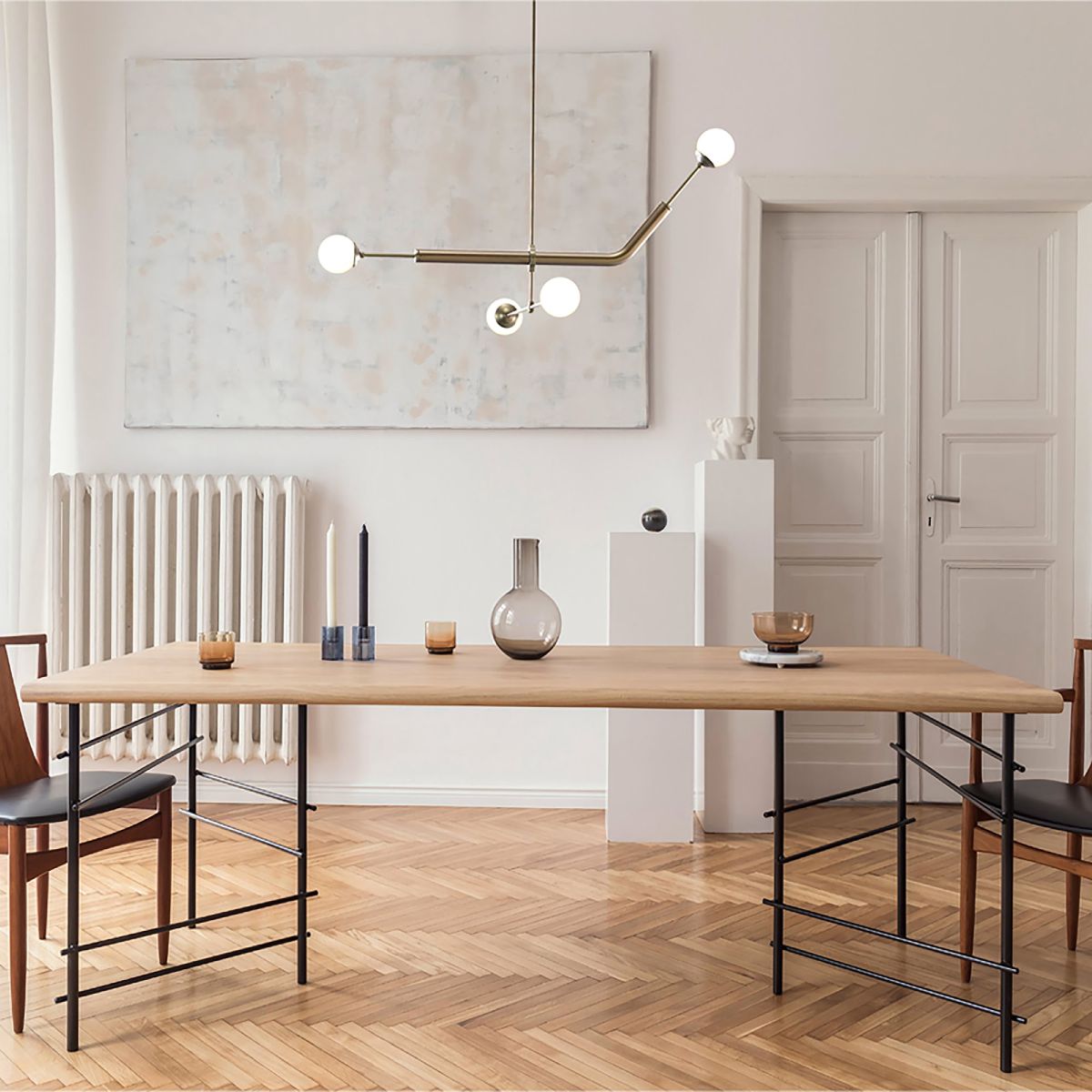Palmer’s spellbinding sculptural creations are made using experimental and scientific processes that see him collaborating with craftsmen up and down the country. The resulting pieces often recreate natural phenomena in materials which are profoundly unnatural and industrial. Their function can sometimes be ambiguous, treading a fine line between art, craft and functional design – an element that Palmer, who describes himself as a ‘functional artist’, embraces. ‘I really like that element of surprise that makes people ask ‘how did you do that? or ‘but, what is it?’,’ he smiles. ‘It’s that magic that sparks interest.’

Baltic Iris mirror by Tom Palmer Studio
Palmer began his career making chandeliers and restoring furniture before he established Tom Palmer Studio in 2014. Today he works out of a space in a former farm building in rural West Sussex, which he says is something of a materials laboratory filled with trials and samples. From brand-new composites and resins that originate from the automotive and aerospace industries to ancient and ‘noble’ materials like stone and timber, Tom’s work runs the gamut. ‘The way that I work with so many materials can be confusing for people,’ he says. ‘But the variety is what drives me, it’s what keeps me excited.’

Parabolic console by Tom Palmer Studio
For Curio, Palmer has pulled together a collection of works made using experimental casting processes. A number of them – including vases, jewellery boxes, and tables – are made in crystalline acrylic, which he treats like a precious material. Appearing like perfectly cut blocks of ice or shimmering quartz – but a fraction of the weight – these pieces are cast using a new technique which allows internal flaws and fractures to develop during the casting process. The tiny crevices are filled with the precious metals palladium and platinum, which flow into the fractures where they catch the light and create a twinkling glacial appearance.

Parabolic console by Tom Palmer Studio
Sitting in contrast to his work in crystalline acrylic, the Parabolic series – including a bench, console and side table – are flawless, black sculptures with perfectly smooth surfaces. These works are developed from a unique casting process that allows parabolic voids and curves to be formed through solid blocks. Palmer uses the process to create cast maquettes, which are 3D scanned and refined digitally before being carved using a 5-axis robot arm. The process allows the pieces to be created in almost any material – wood, stone or even cast bronze, as well as an almost infinite number of colours and finishes. For Curio, the pieces are carved from solid polyurethane blocks and then finished with black automotive car paint to create furniture with an alluring, molten appearance.

Elsewhere, the branch-like Faux Bois candlesticks are cast in super hard plaster and then finished with a hand-carved texture to look like wood, while his Iris mirrors are made from convex lenses of crystal clear polyurethane striated with vibrant pigment to recall human irises. It’s a process Palmer describes as ‘like watercolour painting in 3D’’. Overlayed on hand-silvered mirror discs, these optical artworks amplify light and produce mesmerising multi-layered reflections that shift as the viewer moves around them.
Palmer’s experimental approach and insatiable curiosity makes him a natural fit for Curio, which was founded with the mission to champion contemporary makers who are reimagining heritage craft techniques. ‘The thing that unites my interest in different materials is the search to find a new way of using them,’ reflects Palmer, who later this year will travel to Tuscany in Italy to study marble carving – a trip made possible by funding from The Queen Elizabeth Scholarship Trust (QEST). There, he will explore the stone industry around the Carrara quarries and Pietrasanta before returning to the UK to develop and refine his carving skills, while continuing to produce contemporary pieces of increasing scale, scope and spectacle.
View the collection













Leave a comment
This site is protected by hCaptcha and the hCaptcha Privacy Policy and Terms of Service apply.